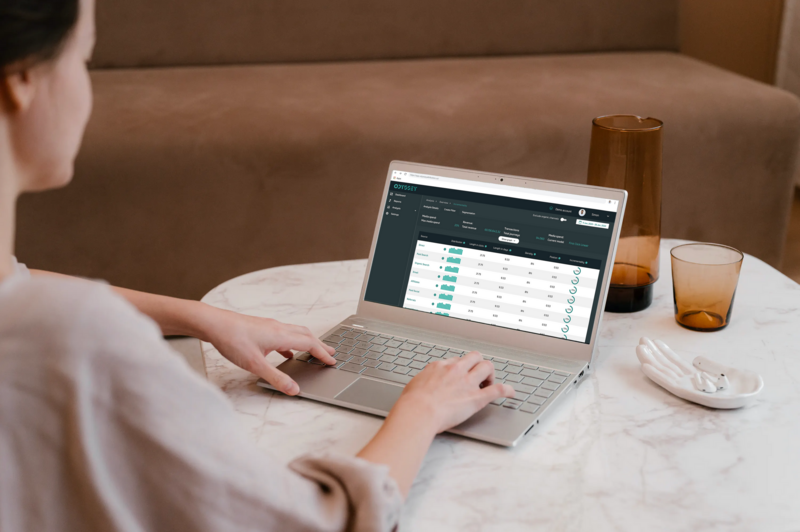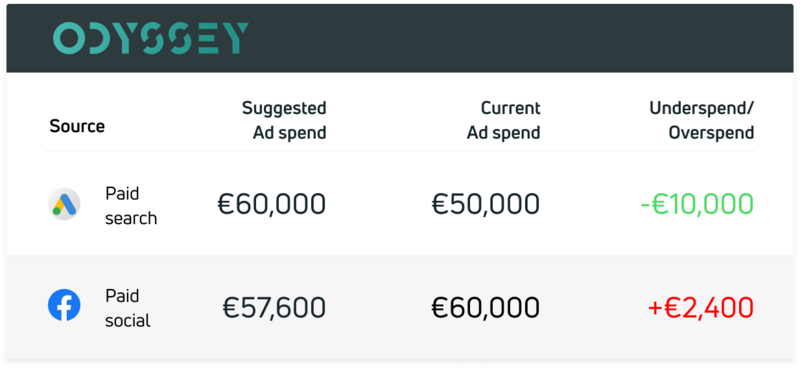How Odyssey uses Google Analytics as a tracking source
One of the biggest benefits of Odyssey Attribution is that we are able to extract the raw data from Google Analytics. How, you are asking? Let us explain
Anyone who has sat through a pitch meeting with an advertising sales representative knows the term; ROAS stands for Return on Ad Spend. It’s calculated by dividing revenue by spend, and is one of the most prevalent key performance indicators for campaigns. As such, it powers a myriad of budget decisions every day. And that’s a problem. Because relying on ROAS alone to decide where to place a company’s marketing dollars can do damage to a business.
The issue with ROAS as a metric isn’t hard to suss out. It measures the cost of a single stream of advertising spending against a pipeline of revenue that may or may not be due solely to that spend. Sure, the last click before conversion may have come from a Facebook ad. But very rarely does that single click represent the entire customer journey. That path is less likely to look like a straight line than it is to look something like this: consumer sees ad while reading a magazine article online, consumer visits website and ingests content, consumer considers another ad to be part of a related search, consumer scrolls Facebook and views another ad, consumer clicks through and makes a purchase.
If a marketing team is looking at that customer journey through the lens of ROAS they’ll miss all but one of those digital touchpoints. That alone is a good enough reason to stop using ROAS as the default metric for determining the health of advertising spend. But what about the analogue touchpoints? What other factors that propelled that consumer to make a purchase on that day at that time? What made them particularly vulnerable to the influence of that Facebook promotion, or made them search for the related term that caused the company’s advertisement to surface? Those are another set of factors that paint the full picture of a consumer’s path to purchase but are completely unrepresented in ROAS. The weather, a television program, a friend’s recommendation can all push a buyer to the next step in their travel toward a purchase. Where ROAS truly fails its users is not in its lack of access to information about those factors–no system will track them all–but in its assumption that they did not exist. ROAS requires its users to assume that a single factor is to thank for each purchase.
These deficits are problematic not simply because they fail to give other promotion methods their proper due. Devoid of the factors that ROAS is blind to, the advertising method that is being measured may not have been successful or–more likely–would have performed at a lower level. In some situations companies using ROAS also end up attributing conversions to ROAS that were actually due almost entirely to an onsite promotion or a retargeting ad. In other words, those purchases would have happened even without the advertisement that ROAS is being applied to. So, a lot of waste and a boatload of inaccuracy can hide behind a really good looking ROAS number.
Businesses that routinely use return on investment, or ROI, as a tool to understand the performance of various actions may feel comfortable with the ROAS formula. However, there are key differences between ROI and ROAS, and those dissimilarities impact their relative usefulness. The marketing blog Sales & Orders explains it this way:
“A good way to think about the difference between ad-related ROI and ROAS is that ROI is a wide-lens metric that assesses how a specific ad affected the company’s overall profits, while ROAS zooms in on the effectiveness of the ad itself, regardless of the overarching impact it had on your business.”
Return on investment, therefore, is a metric that is business-centric. Return on advertising spend is a metric that is ad-centric. ROAS is a focused formula that does not take into account the larger picture.
With all of these inherent, and frankly fairly obvious, drawbacks to using ROAS as a way to take the temperature of an advertising method’s effectiveness, why is it used so widely? Mostly because it’s simple. It’s an easy metric to calculate, and it presents a neat and tidy view of the purchasing ecosystem. While the view is at best incomplete and at worst inaccurate, it’s understandably tempting to believe in a tool that offers simple decision making within the complicated and crowded world of marketing. Unfortunately, ROAS’s simplicity is both what makes it attractive to marketers and what makes it dangerous to rely upon.
The alternative, an attribution model that properly weighs all of the factors influencing a consumer’s path to purchase, is quite the opposite. It’s complicated and messy and requires a complete view of a company’s whole business, all of its marketing efforts, and the larger consumer environment in order to be used. While the model itself is complex, using it doesn’t have to be. Companies that are ready to evaluate their marketing methods more accurately will find that the proper tools can make an attribution model seamless and easy to apply.
The Odyssey platform is an attribution-model tool for e-commerce that can properly measure the complex influences on customers before they convert. The tool gives marketers the ability to calculate the incremental value of each traffic source, as an add-on to their existing Google Analytics account.
Once Odyssey is enabled, it begins to collect information from Google Analytics and, for companies using Google Analytics 360, it is able to begin crunching historical data as well. Once the tool has been able to collect and analyse data, Odyssey will begin to share the incrementality of the company’s traffic sources.
The total-picture promise that an attribution model offers is something that Odyssey can move a company towards. No attribution model has access to every piece of data needed to document each customer’s path to purchase. Odyssey allows for that, and encourages its users to use the data available to its fullest potential while resisting the impulse to fill in holes with assumptions. That is where other metrics fall down, and is an important pitfall to avoid. The tool offers up extremely detailed information about the performance of multiple traffic sources. The insights that Odyssey is able to provide are actionable and, when combined with marketers’ separate understanding of additional factors in the customer’s ecosystem, can lead to concrete steps that are far better informed than those inspired by other models.
How Odyssey uses Google Analytics as a tracking source
One of the biggest benefits of Odyssey Attribution is that we are able to extract the raw data from Google Analytics. How, you are asking? Let us explain
What if we could re-start affiliate marketing?
The lack of a proper attribution model within the industry is actually more or less how we got to the first version of Odyssey. However, there are more topics in which I believe the affiliate industry is completely missing the point.
How to include costs and revenue in your attribution model?
It's important to see which marketing channels drive most of the value, but if these channels cost you a fortune, you don't want to spend all your marketing budget there. Therefore, including both costs and revenue in your MTA model is essential.




